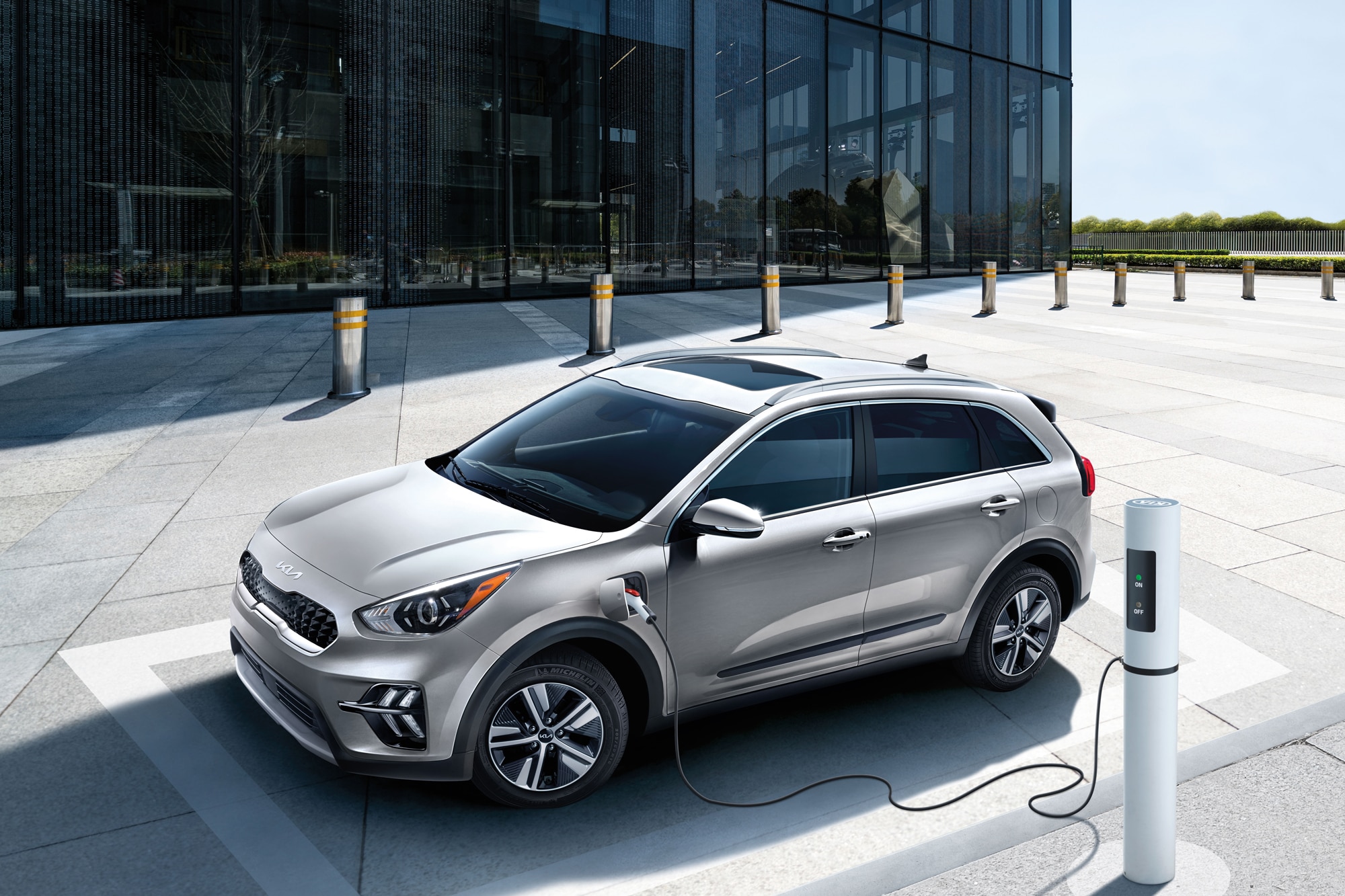What is a Plug-in Hybrid?
A plug-in hybrid vehicle blends electric capability with internal-combustion insurance.
 Kia
Kia
A plug-in hybrid electric vehicle, or PHEV, exists in the middle ground between gas and electric vehicles. It offers consumers many of the benefits of electric power with the peace of mind of having a gas-powered engine in reserve.
It’s easy to understand the growing popularity of electric vehicles: compared with fossil-fuel powered vehicles, EVs are better for the environment, can cost a lot less to fuel, and don’t require as much routine maintenance. The most prominent shortcoming of the EV, however, is range. According to the Department of Energy, the median range of 2021 model year electric vehicles was 234 miles (for reference, gas-powered vehicles averaged 403 miles). Considering that variables like extreme temperatures or cruising at highway speeds will shrink that figure, and with charging stations still sparse and charge times not yet as quick as a fill-up, you can see why range anxiety deters people from going electric.
How Plug-In Hybrids Work
Similar to hybrids, a PHEV works by combining an internal-combustion engine with a battery pack and an electric motor. It builds on that concept with a larger battery pack that can be charged by plugging it into an external power source. It can drive on electricity alone for short distances (generally more than 10 miles but fewer than 50), and when that range runs out, a gas engine kicks in to keep you moving.
As an example, front-wheel drive models of the Toyota Prius hybrid come with a 0.75 kilowatt-hour (kWh) lithium-ion battery pack. These models have no charge port and limited electric-only capability but return up to 56 mpg on the EPA combined-driving cycle. Opt for the Toyota Prius Prime PHEV though, and battery capacity increases to 8.8 kWh, enough to provide 25 miles of electric-only driving, after which point it achieves 54 mpg combined.
Why PHEVs Make Sense
According to a 2018 Department of Transportation report, more than 95% of vehicle trips are 30 miles or less. A couple of PHEVs on the market today have enough range to complete these common outings on battery power alone. Notable examples include the Ford Escape Plug-In Hybrid, with 37 miles of electric range, and the Toyota RAV4 Prime, with 42 miles. Several others can go at least 20 miles—a distance that covers 90% of trips—using only electrons.
As your PHEV’s electric range approaches zero, though, there’s no need to hunt for the nearest charging station, because you still have an internal-combustion engine at your disposal. To return to our Prius Prime example, once you’ve exhausted its 25 miles of electric range, you can still go another 615 miles on a full tank of gas. When people ask, ‘What is a plug-in hybrid?’, telling them about this engine is the best way to explain it.
What’s more, depending on the automaker and the size of the vehicle’s battery pack, the government offers federal tax credits of up to $7,500 to those who buy a new PHEV. 47 states and the District of Columbia also offer additional incentives or rebates for such purchases.
Is a PHEV Right for You?
Despite such attractive incentives available from state and federal governments, PHEVs demand a pricey premium over non-plug-ins. The Kia Niro Plug-In Hybrid is a $4,900 upgrade over the base hybrid, and the Subaru Crosstrek Hybrid is $7,350 more expensive than the comparable gas-powered Limited model and a whopping $13,200 richer than the base model. If you can afford the expense, or if the reduction in emissions is more important to you than the bottom line, then a PHEV may make sense, offering many of the benefits of an EV without any of the range anxiety—the perfect bridge between the past and the future.
Written by humans.
Edited by humans.
 Austin Lindberg
Austin LindbergAustin Lindberg has spent the past 15 years working in journalism as a reporter and an editor covering the automotive industry, motorsports, and soccer for publications in the U.S. and the U.K. He is an EV owner with a keen interest in electrification and green tech.
Related articles
View more related articles